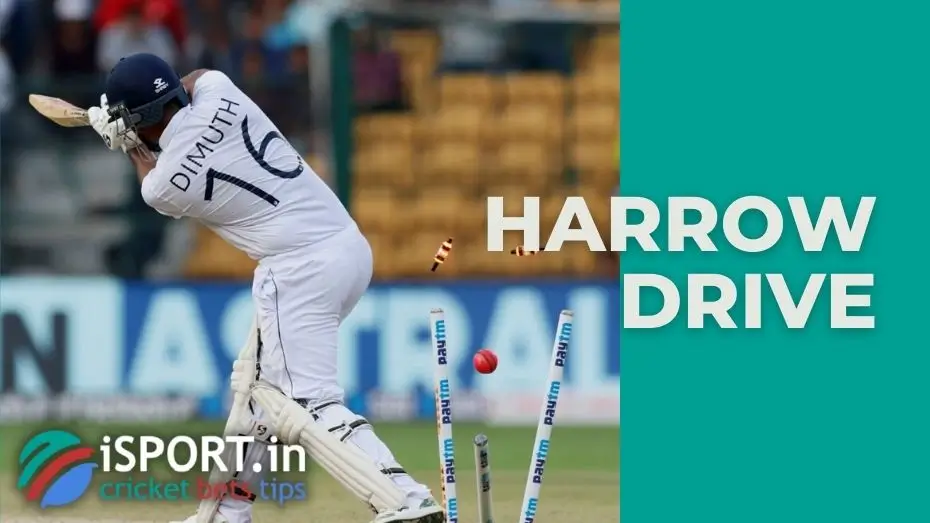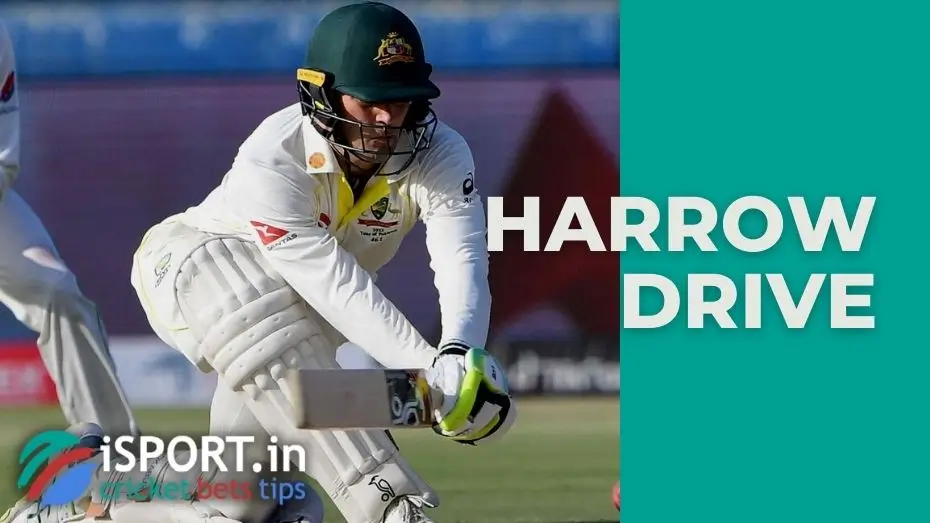Harrow drive

Harrow drive, Chinese Cut, Surrey Cut, French Cut, Inside edge – all these terms are synonyms, denoting in cricket the batsman’s strike on the ball when the edge of the bat touches the ball and directs it to the leg side of the field. There is a lot of controversy around this technique and doubts about whether it actually exists.
What is harrow drive in cricket?
Much more often than harrow drive, the term French Cut is used in cricket. In both cases, it refers to a kick when the ball bounces off the bat and almost touches the stumps of the wicket. At the same time, it is important that the ball is hit inside the edge of the bat and is directed towards fine leg. When performing this strike, the ball does not touch the stumps of the wicket and not destroy it so the batsman remains in the game. Executed correctly, this kick directs the ball to fly far enough away from the pitch, to where fielders least expect it.
Therefore, this tricky technique, harrow drive, allows the batsman to earn more runs than performing other strikes. First of all, this is because fielders need more time to get the ball back into play, which means more time for runs.
At the same time, there is a great risk for a batsman to expose himself because the distance to the wicket stump when performing this strike can be less than an inch. Therefore, this is a rather complicated technique that only the most experienced and skilled players can handle.
It is also impossible to say exactly where the name harrow drive or its synonyms came from. The most popular theory regarding the use of the term French Cut, which is used much more often, is that the British, the inventors of cricket, considered this batsman’s technique to be non-technical and erroneous, so they called it French to make fun of their rivals.
So, a batsman who is seriously going to perform a harrow drive must assess the situation correctly because a failed attempt can lead not only to dismissal, but also to an injury:
- The ball must be directed in such a way that it takes the inside age and is directed at the right angle to the fine leg.
- If the kick is executed correctly, the wicket remains intact, and the batsman can earn runs or just watch the ball cross the boundary rope.
- This strike is so rare and difficult that few players risk using it. One of those who used this punch often was Mark Waugh. This Australian cricketer was not only not afraid to intentionally use harrow drive, but also brought this technique to perfection, earning the maximum number of runs thanks to it.
The situation when the wicket is still destroyed, and the batsman is knocked out because of his own stroke is called Played On.

A batsman’s mistake, a bowler’s plan or a clever trick: all questions about harrow drive
It is so difficult to perform this technique, and it is seen so rarely that it is impossible even to say with absolute certainty that the players who used it did it intentionally and not accidentally.
Many fans and even players are of the opinion that any case of such a blow is just a batsman’s mistake because it is simply impossible to perform such a technique on purpose, and it is too risky, especially when it comes to decisive innings in a match.
After all, in theory, no matter how the ball flies, the batsman can get it with the bat in the usual way, without using the edge of the bat. In addition, such a blow is extremely rarely successful because the direction of the ball’s flight is almost impossible to calculate and plan, especially in a cricket match, where a decision must be made in a fraction of a second (we remind you that the ball can reach a speed of 161 km / h).
In addition, the player performing this strike deals with two risks: he may be knocked out due to the destruction of the wicket, and the ball may be immediately caught by fielders, which will not allow him to earn runs.
There is also an opinion that the bowler of the opposing team can rig harrow drive. In this case, the ball is sent a little closer to the stumps than the batsman expects, who is forced to hit back at the last moment, even using the edge of the bat, relying on luck and his own skill.
